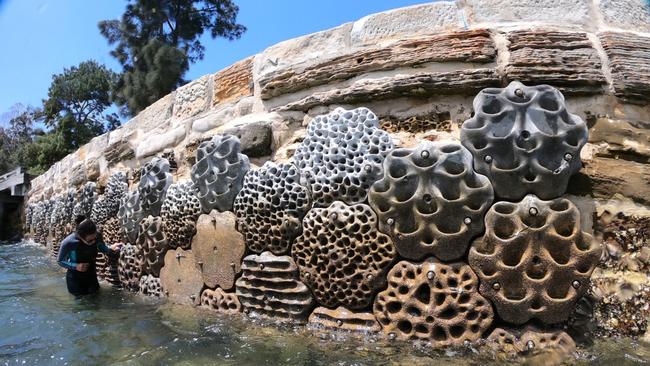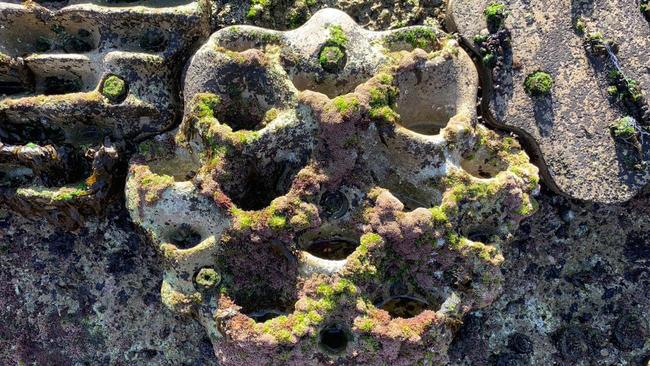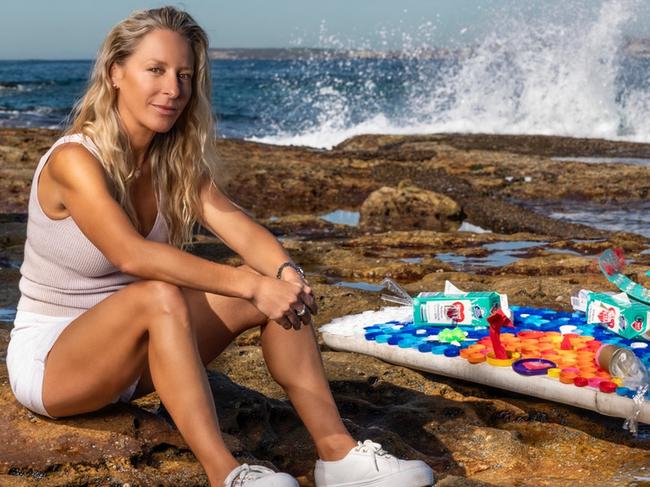Strange object found in Sydney Harbour to help biodiversity
A mysterious object found in Sydney Harbour could be key to helping to undo damage caused over hundreds of years.
Sustainability
Don't miss out on the headlines from Sustainability. Followed categories will be added to My News.
Sydney Harbour might be an amazing feat of engineering but the booming construction along its waters has seen 90 per cent of its coastal defence structures like sand, mud flats and oyster reefs disappear since European colonisation.
One of the worst impacts of construction is its smooth surfaces, which does not allow marine seaweeds and animals any protection from predators or environmental stressors.
Now a project called Living Sea Walls has come up with a solution that is working so well it’s being used globally to help save our seas.
Drawing on decades of research, the team have developed marine panels that can be attached to infrastructure, providing plants and animals with a semi-natural habitat.

Brought to life by a team of Macquarie University scientists, the Living Seawalls project has the potential to save some of our ocean’s rapidly declining biodiversity.
Associate Professor Melanie Bishop, who is co-leading the project, says there is now more sea floor modified by built infrastructure – think pontoons, pilings, offshore wind turbines, aquaculture developments and mining rigs – than natural mangrove and seagrass forests.
“There’s a growing footprint of built structure in our oceans, and now we’re at the point where these structures cover an area of 32,000 kilometres squared,” she said.
“Research showed that there were stark differences in the plants, animals and seaweeds utilising these built structures as compared to natural habitats. They lack nooks and crannies for species to hide from predators and from environmental stressors, such as extreme temperatures and drying at low tide.”
The team has designed ten different habitat panels using 3D printing to cast moulds out of eco-friendly concrete – a material that the beloved Sydney rock oyster responds very positively to.

With around 1000 panels installed so far in places like Townsville, Adelaide, Singapore, Gibraltar and Wales, the team have seen incredible results since their inaugural Living Seawall was installed in Sydney Harbour in 2018.
“We’ve found that up to 115 different species are colonising the panels, including oysters. We also found that our panel designs can support three times as many species as a flat and featureless [infrastructure] surface can,” she said.
Interestingly enough, Bishop also found the Living Seawalls are supporting up to 36 per cent more life than unmodified seawalls which have hosted decades of marine growth.


With such wonderful results, big things are in store for the Living Seawalls team over the next few years. Aiming to expand to produce panels that can be fitted to other built structures like pilings, they also have a big dream of establishing Living Seawalls on every continent. Another person who’s dedicating time to saving our oceans is Anita Kolni. The ocean has always been her safe space so when she began feeling the despair of climate change and its impacts on her beloved deep blue, the Bondi Beach-based entrepreneur decided it was time to take climate action into her own hands.
Joining forces with fellow ocean-lover – and co-creator of the esteemed Vivid Sydney – Carolyn Grant in 2017, the pair created the Ocean Lovers Festival to spark hope and explore solutions in the ocean space.

“Australians are very connected to their ocean, but it’s a fairly voiceless estate. The serenity of the sea doesn’t reveal the destruction we’re reckoning on it. We needed a hopeful voice for the oceans, and this is it,” Kolni said.
Covering 70 per cent of the planet, our oceans have battled the looming consequences of climate change first hand. From rising sea levels, to ocean acidification, current alterations, higher water temperatures and negative effects on fish migration, the ocean has absorbed over 90 per cent of the heat caused by climate change since the 1970s. In fact, a coral bleaching event on the Great Barrier Reef in 2016 caused 22 per cent of the natural wonders’ coral to die in just a few months.
“The ocean is out of sight and out of mind. Whatever is going on beneath the surface, it looks beautiful,” said Kolni.
“We can go sailing on it. We can go surfing in it. We can go swimming in it, but most people are actually quite unaware of the important role [the ocean] plays in our lives.”

Set to be staged in Bondi Beach from March 10 to 13, the Ocean Lovers Festival – which is sponsored by Volvo – will feature four days of free entertainment and events, showcasing the latest innovations, state-of-the-art technology and out-of-the-box ideas for helping the ocean. From art to music, food, talks, stalls, workshops and installations, festival-goers will be immersed in the wonders of the sea.
Interactive gallery event Out of Sight Out of Mind (featuring the beautiful work of underwater photographer Christophe Bailhache) will zoom in on this idea, giving festival-goers the opportunity to take a sneak peek below the rolling waves of their favourite swimming spots.
Participants can also get their thinking caps on with Science in your Swimmers, an event that encourages beachgoers to head straight from the sea to hear from over 20 scientists about the sustainability solutions they’ve been exploring.
Another event, the Indigenous Coastal Care Walk and Talk, will draw upon First Nation wisdom to educate ocean lovers on the ancient environmental care and culture practiced by the local Yuin Nation people,
Across the four days, there will also be beach cleans, yoga, lab workshops and ocean waste-art.
Imogen Kars is a freelance writer.
This content is created in sponsorship with Volvo.
Originally published as Strange object found in Sydney Harbour to help biodiversity




